(A Series of Recollections by former Mayor Leon White as told to Alan Mitchell)
“There were blackouts. At night we had to hang blankets over windows to make it hard for any plane seeking to bomb us, to see us!”

There was rationing. Each month his parents received from the Government a booklet of coupons to be used for basics like flour, potatoes, sugar, and gasoline. People who could, were asked to plant a Victory Garden and grow vegetables. A backyard garden was nothing new for Leon’s parents. Gene and Pearl White already had many years of experience growing their own cabbage, carrots, peas, potatoes, and Swiss chard at their home which was built by Gene White and architect P.J. Lindberg in 1903/04.
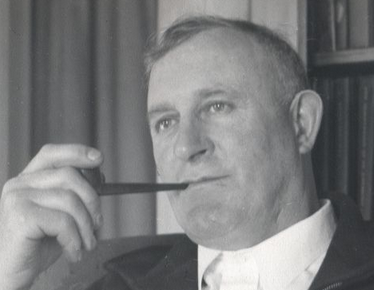
Port Orford held organized collections for scrap metal, old newspapers and magazines for the war effort. Everyone took their recycling seriously.
Port Orford had at least two or three Victory Bond drives. People were urged to buy as many as they could. The program for the 5 and 7 year bonds was something like this. You paid: $8 for a bond that was worth $10 at maturity; $18 for a $25 bond; $35 for a $50 bond, and $75 for a $100 bond.
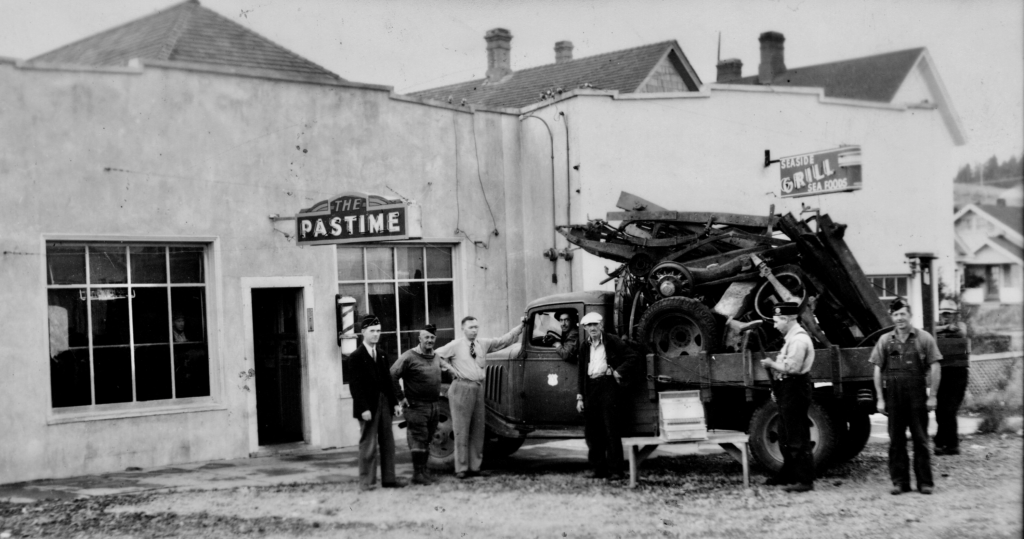
Of course, there were no new cars manufactured during the war years. Leon remembered seeing a news picture showing tanks coming off a General Motors Cadillac assembly line. All the car manufacturers were producing only what our military needed.
People learned how the war was going from newspapers, radio, news magazines like Life Magazine, and the 10-15 minute newsreels at Port Orford’s popular local movie theater – The Colonial.
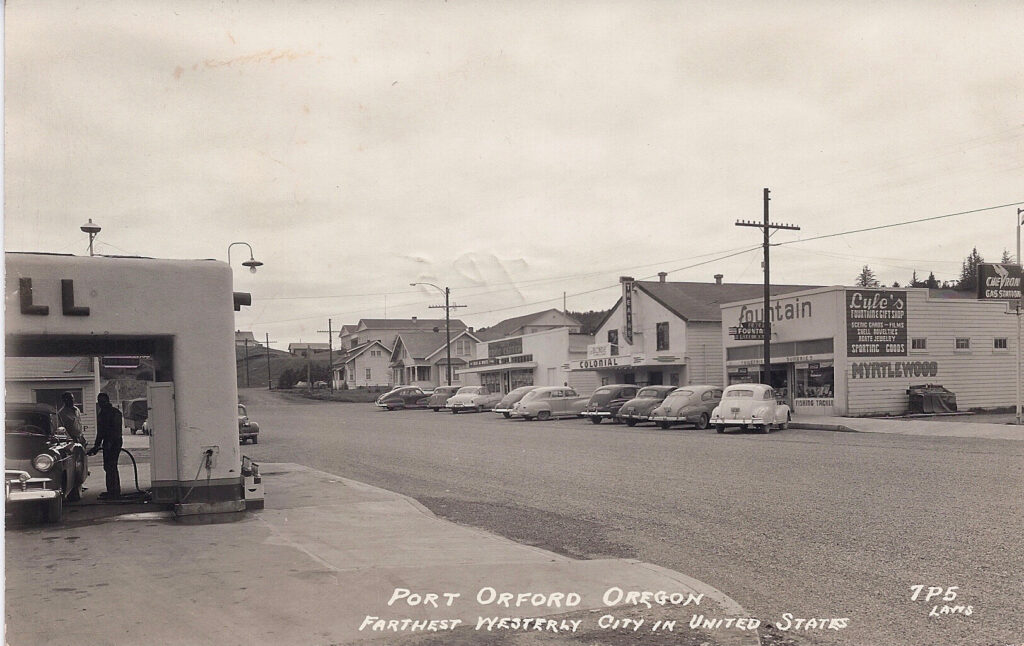
You knew the war had come to Port Orford when the Coast Guard stationed a lot more men in the area. Leon was 6 years old and his 60 year old father was Port Orford’s Town Marshall. While making his daily rounds and coordinating with Military commanders, Gene White frequently took his young son with him.
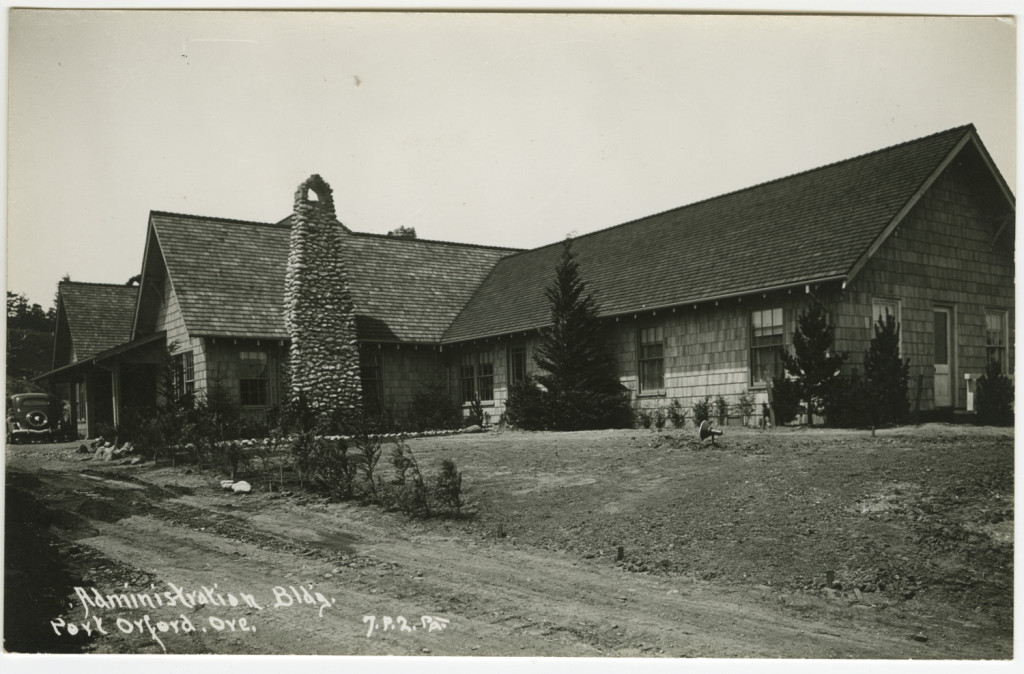
Gilbert Gable’s Administration Building had become the Military’s headquarters for the area. It was important that beaches be constantly patrolled to prevent potential spies from coming ashore. The 24 hour Patrols included large German Shepherd guard dogs. There was a dog kennel for 10-12 of them behind the Administration Building. Every day you could see soldiers with guard dogs on long leashes walking down the hill to the Dock Beach and then on east to Hubbard Creek to look for anything suspicious.
At a later date, the Army arrived with a large caliber anti-aircraft gun. It was installed on top of Fort Point, the hill south of Leon’s home. A big hole was dug, the large gun rolled into it, and then aimed down to cover Dock Beach, the Dock itself and the Harbor.
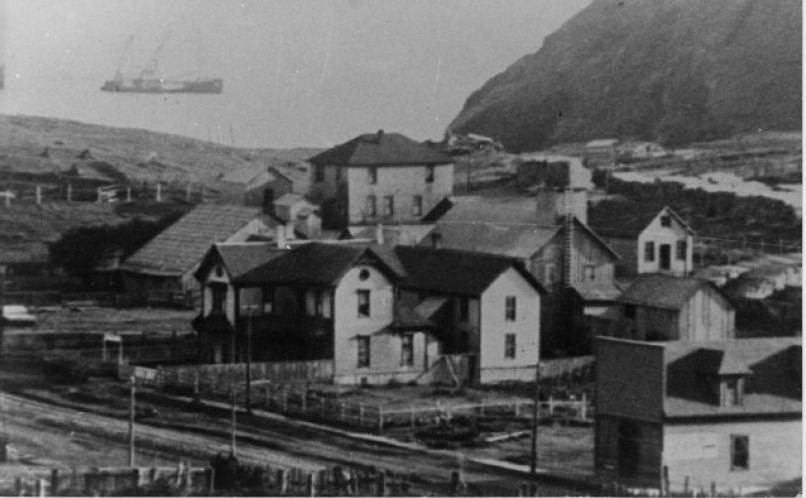
The Leon White House was built by Eugene White and P.J. Lindberg in 1903/04.
On October 7th, 1942, 40 wounded sailors from the 7,000 ton oil tanker USS Larry Doheny were brought ashore at the Port Orford Dock. The Japanese submarine I-25 had sunk them off Cape Sebastian. Many of the wounded were heavily bandaged. Some were put into the Coast Guard’s Barracks at the Heads, the rest moved into the American Legion Building to await transportation to a military hospital. Leon clearly recalls seeing flatbed trucks loaded with injured sailors being driven past his home up the hill to Gilbert Gable’s Administration Building. He remembers others were taken to the Rainbow Gardens Dance Hall, as well as the Legion Hall across the street from Port Orford Elementary school’s playground. His 8-year-old sister Annette was in class that day. She and her classmates watched as bandaged survivors were unloaded in front of the Legion Hall.
Soon after the war, people learned the I-25 submarine that sunk the tanker ship USS Larry Doheny in October, 1942, was the same one that had launched a small float plane off Brookings on September 9th, 1942, in an attempt to firebomb the Siskiyou National Forest. That Brookings (“Lookout Air Raids”) mission failed because the forest was so wet. After retreiving the float plane, the sub was spotted and unsuccessfully attacked from the air. To elude our military the I-25 headed north, then secretly stayed on the ocean floor near Port Orford. (Later accounts of the incident pinpointed this second mission’s launch location to have been just west of Cape Blanco). That second attack was flown up the Sixes River Valley. Wet conditions in the forest also caused that attack to fail.
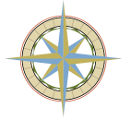

Leave a Reply